Rainforest destruction
The biggest threat to orangutans is the destruction of their habitat. Borneo was once entirely covered by rainforests. But with the start of industrialisation and the growing human demand for space, food and energy, forest areas have diminished from year to year. Today, not even half of Borneo is covered by forest.
The extent of rainforest destruction on Borneo
Borneo, the third largest island in the world, is divided between the states of Indonesia, Malaysia and Brunei. Indonesia is one of the most densely forested countries in the world, but large parts of the rainforests have been destroyed over the past 100 years.
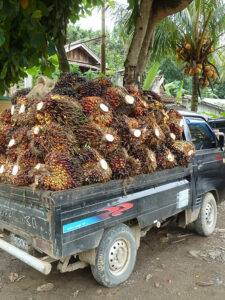 In 1950, more than 80 percent of the country was still covered with forests. In the following decades, the excessive exploitation of tropical timber began, with uncontrolled logging operations for the export market. Entire forests were cleared in order to grow light wood for plywood, and later for the growing paper and pulp industry. However, the situation for the Indonesian rainforests became really dramatic from the 1990s onwards: The palm oil boom began.
In 1950, more than 80 percent of the country was still covered with forests. In the following decades, the excessive exploitation of tropical timber began, with uncontrolled logging operations for the export market. Entire forests were cleared in order to grow light wood for plywood, and later for the growing paper and pulp industry. However, the situation for the Indonesian rainforests became really dramatic from the 1990s onwards: The palm oil boom began.
By now, 85 % of the world’s palm oil production originates from Indonesia and Malaysia. At least 14 million hectares of the country — mainly in Borneo and Sumatra — are now covered with oil palm plantations. This is roughly equivalent to the area of Austria, Switzerland and the Netherlands combined. From 2004 to 2017 alone, 5.8 million hectares of rainforest were destroyed on Borneo.
Crisis Unfolds: Selective Logging of Tropical Hardwoods Begins
Selective logging may sound harmless at first. Individual valuable tropical hardwoods like Teak or Meranti are extracted from the rainforest to be exported worldwide, where they are used in garden furniture, doors, or hardwood flooring. However, in reality, it marks the beginning of destruction. To access the logging sites and transport the felled wood, roads or canals must be constructed. This opens up the area to both people and heavy machinery, including illegal logging operations.
Furthermore, when a tree falls, it often takes down other trees and plants with it. The closed canopy is torn apart, leaving the ground vulnerable to drying out and erosion.
Once the path is cleared into the rainforest, illegal loggers (and poachers) also find it easier to enter. As a result, what starts as the clearing of a few individual trees quickly escalates into the removal of hundreds, further thinning and weakening the rainforest.
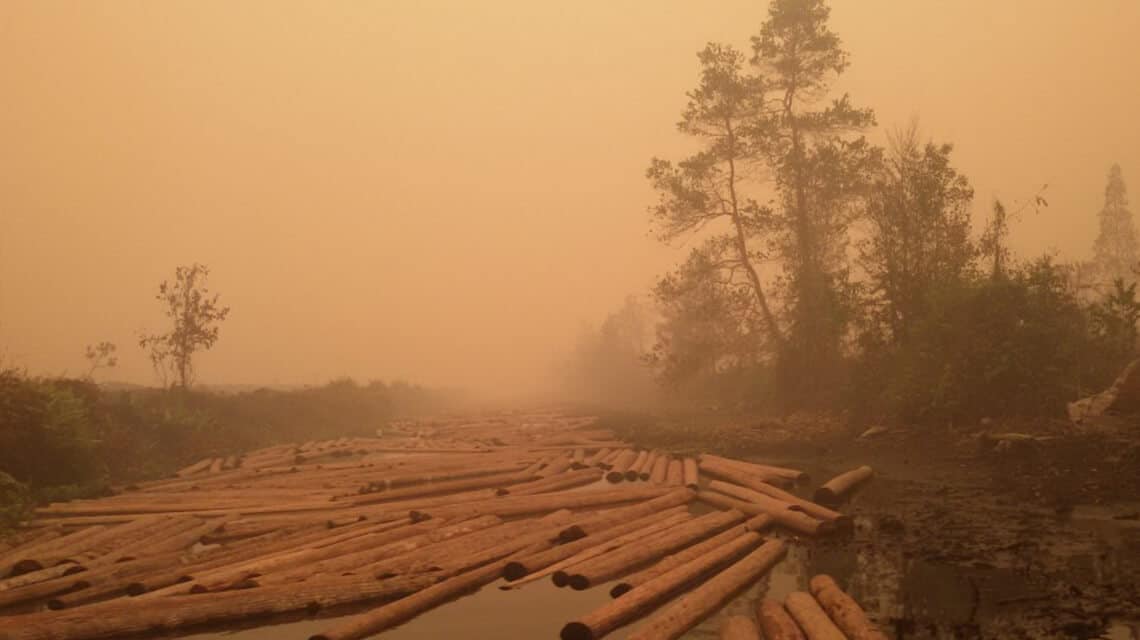
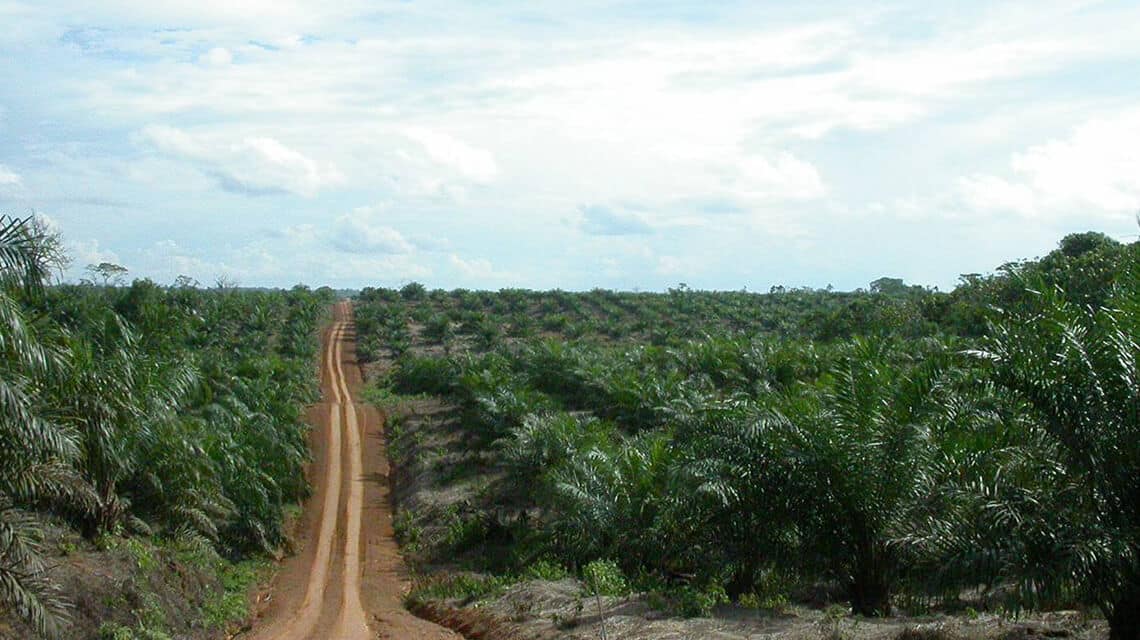
The Path to Destruction: Roads and Canals
Tropical rainforests are inaccessible — until a road is built. Without paved roads, neither wood, mineral resources, nor palm fruits can be transported. Similarly, canals, constructed to drain marshy peatland for agricultural use, have a comparable impact, especially on the timber industry.
Furthermore, roads increase the value of adjacent lands, potentially leading to land conflicts and further deforestation. They result in landscape fragmentation, disrupting habitats and ultimately causing a loss of biodiversity.

Devastating forest fires
The catastrophic fires of 2015 destroyed nearly 2.6 million hectares of forest in Indonesia. In the process, 1,750,000,000 tonnes of carbon dioxide equivalents were released — almost three times the normal annual emissions of the entire country of Indonesia.
Fortunately, such disasters do not happen every year — but they are becoming more frequent due to climate change. Seasonal fires in the dry season are not uncommon on Borneo. Fires are also frequently used to clear minor areas of land in small-scale agriculture. This happens at the end of the dry season, in the hope that the onset of rain will extinguish the fires. This way, the freshly nutrient-enriched soil can be used as a cultivation area to supply the farmers themselves. Yet again and again, larger forest areas are deliberately set on fire — in order to create a factual basis for new oil palm plantations. The onset of the rainy season is not always predictable, however, not least because of the accelerating climate change. And so a small fire can quickly turn into a large one, spreading rapidly through the dry grass and underwood, and destroying large areas of forest.
Fires on dry peatland are even more dangerous. There, the fires may be extinguished above ground, but they can continue simmering underground and spread for kilometres. Such fires are highly dangerous and almost impossible to control. For this reason, we ensure the installation of fire hydrants, regular fire patrols and fire safety training in our project areas.
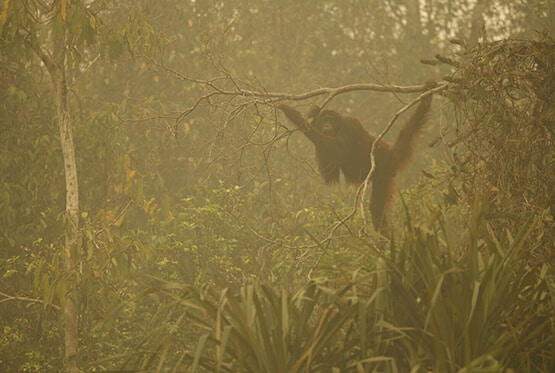
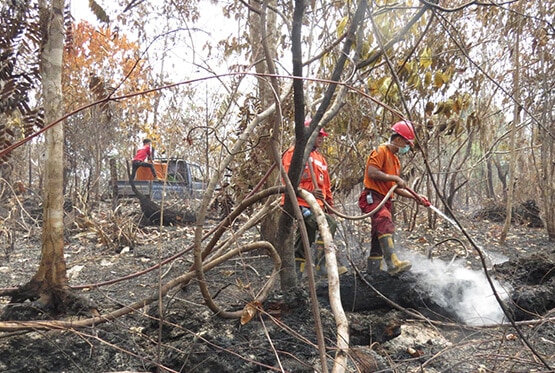
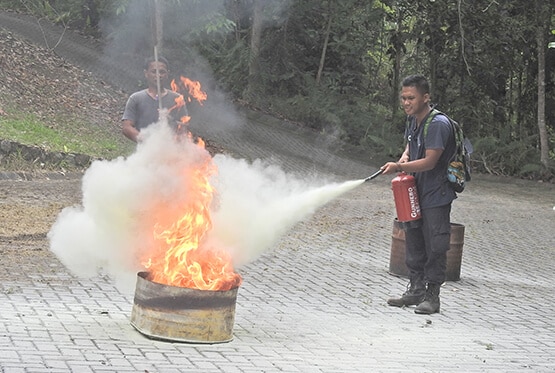
Plantations and monocultures
People are increasingly hungry for food and for energy. And Indonesia’s population continues to grow: in 1990, the country had 179.38 million inhabitants; 270.2 million in 2020. Consequently, the demand for staple foods such as rice is increasing as well. More and more land is required for cultivation, and more and more forest is being cleared for this purpose. In the mid-1990s, for example, tens of thousands of hectares of rainforest were cleared and the peatland drained through canals in our Mawas project area in order to make Indonesia independent of expensive rice imports through the so-called Mega Rice Project. But the acidic peat soil was not suitable for rice cultivation. The project failed, the rainforest, however, was destroyed.
But the biggest rainforest killer on Borneo is palm oil, which is exported all over the world. The oil, for which the home of the orangutans is destroyed, is found in ready meals, cosmetics, cleaning agents, pet food and now increasingly also in the so-called biodiesel.
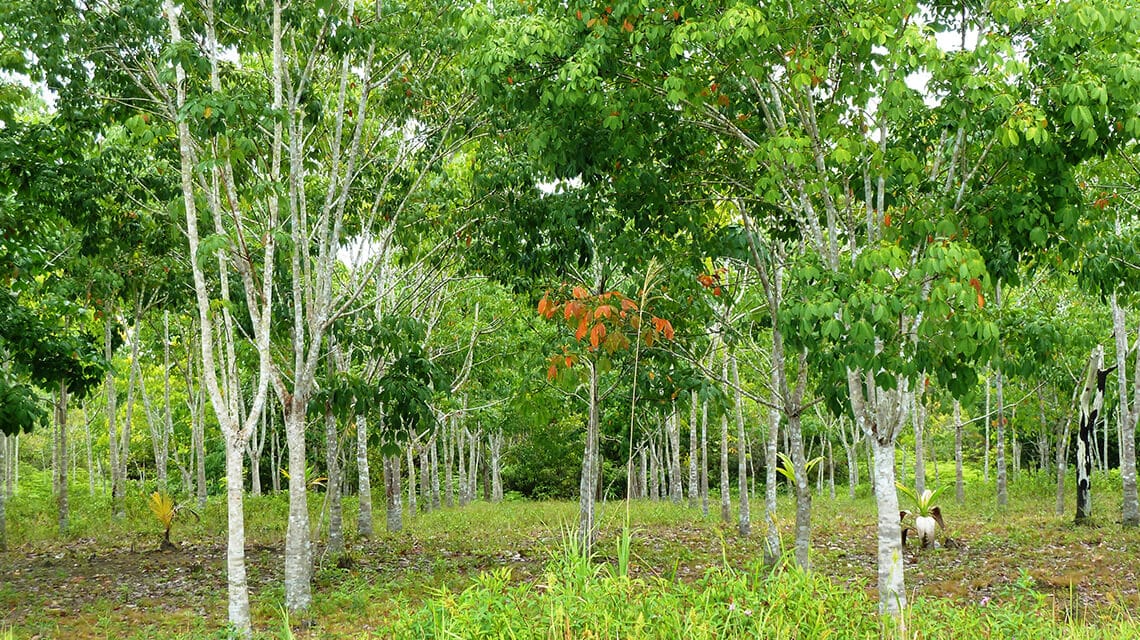
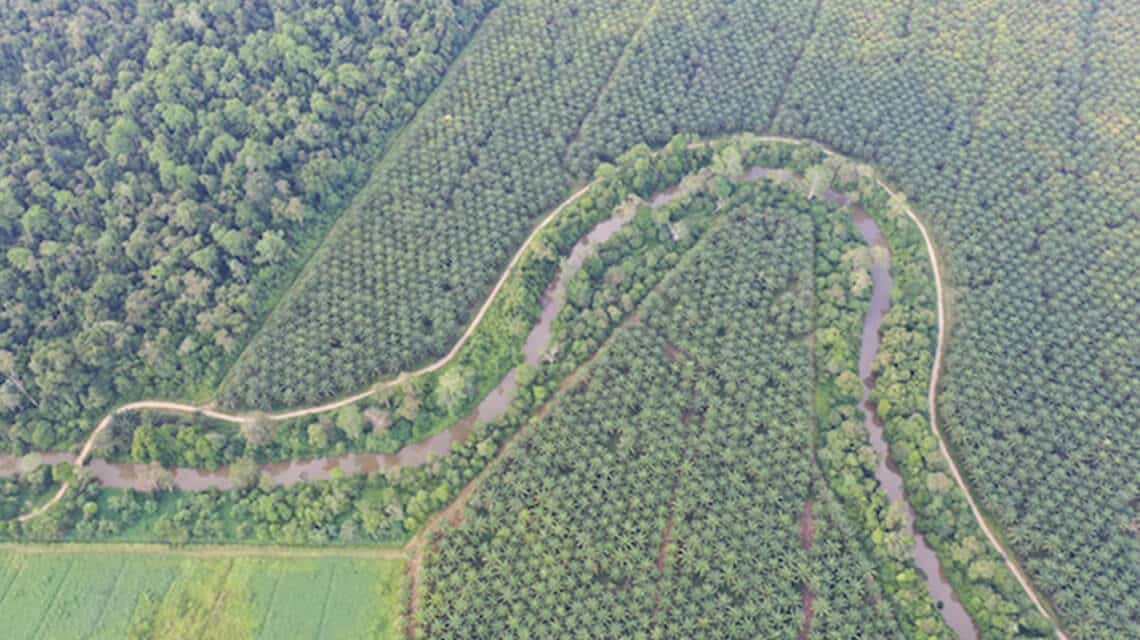
Pulp and paper
In Indonesia, the production of paper also leads to the destruction of rainforests and the planting of monocultures of fast-growing woods such as eucalyptus and acacia. On average, 2.2 tonnes of wood are required for producing one tonne of pulp for papermaking.
Indonesia is regarded as the sixth largest producer of paper and pulp (pulp & paper) in the world. In Asia, the country ranks fourth behind China, Japan and South Korea. In 2016, the country produced six million tonnes of pulp and 10.3 million tonnes of paper; and in 2021, already 8.8 million tonnes of pulp and 15.8 million tonnes of paper. And the demand continues to rise.

Mining of natural resources
Indonesia is now one of the world’s largest exporters of coal. There has been a massive increase in coal production since 2000, when around 77 million tonnes of coal were produced. In 2020, it was 562.5 million tonnes.
Almost 80 % of the coal is exported to India, China, South Korea, Vietnam, Thailand and the Philippines. The remaining amount is used for domestic coal-fired power plants with a forecast that the demand for this will continue to increase in the future.
Borneo, especially East, South and Central Kalimantan, is one of the main coal mining areas in Indonesia. And coal mining is another crucial factor in the destruction of the rainforests.
Besides coal, tin, copper, nickel, silver, platinum, lead, iron and bauxite are also mined on Borneo. To this day, Indonesia is also considered one of the most important gold mining countries. Mining precious metals like gold does not only result in the destruction of forests. The application of chemicals such as mercury and cyanide poisons soils and waters. Through direct contact with the toxins while working, and through a transition into the food chain, gold mining poses a major threat.

Folgen der Regenwaldzerstörung
The impacts of decades-long destruction of tropical rainforests are slowly becoming apparent to humanity. It’s not just trees that are being destroyed; entire habitats are being obliterated. Plants, fungi, and animals are going extinct, some of which science hasn’t even had the chance to discover, let alone understand their roles in the ecosystem. This loss erases a genetic diversity that serves as a crucial natural defense against diseases. As we encroach further into once remote ecosystems, we come into contact with pathogens to which our immune systems are ill-equipped, as COVID-19 has starkly demonstrated. Tropical rainforests are vital for the global climate. They cool the atmosphere, sequester carbon dioxide, cleanse the air of pollutants, store and filter drinking water, and prevent soil erosion.
As climate change progresses, even the remaining rainforests suffer. Dry and rainy seasons shift, weather events become more extreme, and temperatures rise – all of which have repercussions on the health of the remaining rainforests.
Forest for life
Save the rainforest
Saving the orangutans cannot succeed without preserving their habitat! Mawas is a thousand-year-old peat swamp rainforest housing one of the largest wild orangutan populations in Indonesia. Although significant portions of this unique rainforest were lost as part of a megaproject in the 1990s.
Now, we have a vision: To restore the forest and make it a home for even more orangutans.
Frequently asked questions
What are the causes of rainforest destruction?
Your Subtitle Goes Here
In essence, it boils down to the world’s insatiable appetite for food, energy, and capital. The palm oil boom that started in the mid-1990s acted as a turbocharger for the destruction of Borneo’s rainforests. However, the demand for coal, tropical timber, paper, pulp, and food has also led to the annihilation of vast rainforest expanses.
Adding to this, climate change has made these already vulnerable forests even more susceptible to wildfires during dry spells, while the unprotected ground becomes vulnerable to soil erosion during periods of extreme rainfall, which occurs in some years.
What are the consequences of rainforest destruction?
Your Subtitle Goes Here
The ramifications of rainforest destruction are as diverse as the causes.
Not only are forests destroyed, but their biodiversity as well. Many species, such as the orangutan, are adapted to and thus particularly dependent on the rainforest as a habitat. By destroying their home, we are destroying their future. Not only the orangutan is threatened with extinction due to rainforest destruction. Species such as the banteng, the miller gibbon, the Borneo pygmy elephant or the Malayan bear — to name just the “big” animals — are similarly endangered. In addition, there are countless amphibians, reptiles, insects, fungi and plants, some of which have adapted to specific habitats to such an extent that the slightest interference with their ecosystem has far-reaching consequences for the entire species. In the worst case, extinction.
On the other hand, the decimation or extinction of species has ramifications for the entire rainforest system. For each species has its role and task. The orangutan, for example, is considered the gardener of the rainforest: it spreads seeds and breaks branches out of the canopy when building its sleeping nests, allowing light to reach the ground.
If the rainforest ecosystem is no longer intact, it can no longer fulfil roles such as cleaning and storing water. The soil becomes vulnerable to erosion and landslides, and floods occur more frequently.
The groundwater level will drop due to the lack of vegetation. This causes the soil to dry out, preventing healthy plant growth.
Rainforest destruction is an accelerator for the climate catastrophe. When forests are burned, the carbon stored in the leaves, roots and in the wood is released as CO2, which contributes to global warming.
Peatlands — or on Borneo the tropical peat swamp rainforests — are gigantic CO2 reservoirs. A large part of the peat swamp forests is located in Indonesia. They cover about ten percent of the country, an area of about 22 million hectares (roughly the size of Great Britain). Depending on their depth, peat swamp forests store between 3,000 and 6,000 tonnes of carbon per hectare, almost 50 times as much as similarly sized rainforests without peat soil (120 to 400 tonnes of carbon per hectare). Clearing and draining just one hectare of peat swamp forest emits 1,000 times as much CO2 as flying from Paris to New York. CO2 emissions from cleared peatlands accounted for half of all of Indonesia’s CO2 emissions in 2015.
How can rainforest destruction be prevented?
Your Subtitle Goes Here
By avoiding non-sustainable palm oil, driving less (biodiesel), reducing paper consumption, using recycled paper, not buying or using tropical timber. And of course, by reforesting “Lebenswald” living forests and protecting orangutans with BOS.

You have a question?
Donations are a matter of trust
Transparent use of funds is a matter of course for us. In September 2013, we joined the a non profit initiative of Transparency International Germany and signed its declaration of commitment.
